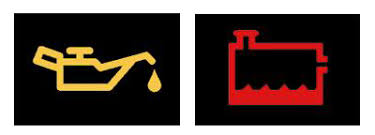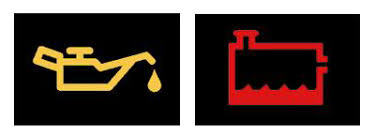Hindsight is a wonderful thing indeed. How many times have you done something and regretted it afterwards? It could be a little thing such as an impulse purchase you could ill afford, or much worse, exchanging emails with an African businessman prior to sending £4000 of your life savings by Western Union for a promised share of several million dollars! Either way, if we had the benefit of being able to predict the outcome of our actions, would we do things differently?
As I’m sure you know, this blog is predominantly about cars and I’m not about to begin preaching about wasting money as over the years, I’ve squandered more than I ever should’ve on pointless and unnecessary things! There are however one or two cautionary tales that I can share thanks to the experience of our customers that could just save you a few thousand quid if something similar should ever happen to you.
If like many car owners these days, you rarely (if ever!) bother to open the bonnet and check your engine’s vital fluids, I’m a) surprised you’re even reading a blog about cars and b) wondering if you are interested enough to keep reading?
Modern cars are generally so much more reliable than those driven by generations before us. Whilst it was pretty common to have an oil change and service every 6000 miles, most cars since the early 2000’s have recommended service intervals of between 9000 and 20000 miles. That’s an awfully long time, particularly if you just happened to have ‘missed’ a couple of services. That could mean that apart from the annual MOT test after 3 years, your poor engine might not have even seen an oily rag or a spanner for 40,000 miles or more! Some people genuinely believe that servicing their car is ‘optional’ and that as long as it stays running and passes the MOT, it’s absolutely fine to hurtle up and down the motorway at 70mph. It’s not until an ominous noise begins or a dashboard warning light starts flashing that they’d even consider calling a garage. All too often though, the first we hear about a fault is when the car is left on our forecourt by the RAC or AA. Sure, the patrolman would’ve attempted to fix the fault by the roadside and get the customer on their way but in many cases, there’s no choice but to tow the car to a ‘recommended’ garage (that’s us!) and we’ll take a look and see what the damage is.

Don’t ignore the signs……………
The following scenarios happened to two different customers with very similar cars in the last year. Their reactions however were completely different.
Mrs. W has owned her 2007 Vauxhall Astra for the last 4 years or so and it’s been to us every year for a service and MOT. During a recent long journey however, the low coolant light (red one above – that’s actually meant to be a radiator) illuminated on the motorway. Inconvenient as it was to stop, she wisely decided that there may well be something wrong and so she pulled over as soon as it was safe and called the RAC. Once the patrolman eventually arrived, he found the cooling system tank empty and quickly diagnosed a split rubber coolant pipe at the back of the engine block that was leaking. To get her on the way, he did a temporary repair using a bit of metal pipe and a couple of jubilee clips, filled it back up with water and told her to take it to a garage to have a new pipe fitted ASAP. Having made it home without further incident, she brought the car in to us the next morning and we purchased a new pipe from Vauxhall at the bargain price of £14.80, spent 1.2 hour or labour fitting it and filled the cooling system back up with antifreeze and send Mrs. W on her way with a bill of under £100 and a non-leaking Astra. No damage done and just a 10 year old bit of rubber pipe splitting had caused a minor inconvenience meaning that she was 3 hours late home.
Ignore them at your peril………
OK, so that had a happy ending but it’s not always so. The fault was the same but the outcome very different indeed!
Miss X (yes, I know I’m not very imaginative with the names) was also the owner of a very similar 2007 Astra. We hadn’t seen her before as a customer, either for an MOT (she always takes it to the cheapest fast-fit centre offering £25 MOTs), or for a service and it simply ended up on our forecourt as the AA recommended us as an honest local garage to have her car recovered to after it had expired in a cloud of smoke by the side of the motorway. After speaking to the (somewhat distressed) customer, we found out that the fault also began as just the low coolant level light coming on. Unlike Mrs. W. however, this customer decided to keep driving as it was late and she wanted to get home. Sadly that wasn’t to happen as less than five miles since the light came on, the temperature gauge went into the red and less than a minute afterwards, the engine lost power, all of the dashboard lights came on including the oil and battery warnings, a huge plume of dense blue smoke billowed from the exhaust pipe causing other road users to swerve whilst temporarily blinded by the oily fog. She pressed the clutch, put the hazard lights on and coasted to a halt. Attempts to restart the engine were met with nothing but a strange, wheezing sound as it cranked and cranked on the starter motor until the battery was flat. The AA chap knew he was onto a lost cause as soon as he opened the bonnet and saw the carnage within. The engine was too hot to even touch and the remains of its oil were sprayed all over the engine bay. The plastic engine cover had actually melted and underneath the ignition coil unit plastic case was distended and charred. The plastic camshaft cover was so hot it was sagging in the middle and the radiator was empty and still making a metallic crackling sound as the metal was contracting. At the rear of then engine, amidst all the smoke and destruction, it was clear it was the same pipe that split and caused the original loss of engine coolant, yet it was the decision of the driver to ignore the warning signs and continue her journey that ended in disaster!
In the light of the next morning, once the engine had cooled, we began the assessment. It was immediately obvious that the loss of compression and everything melted would mean that the engine was beyond economic repair but we explained to the customer that we could take the cylinder head off and assess it properly, to which she reluctantly agreed. The damage was extensive and catastrophic meaning that only a new engine would ever get this car driving again. If you’re someone with a degree of mechanical sympathy, this might make for uncomfortable reading.
Timeline of a disaster……..
- Rubber coolant pipe (£15 remember!) develops a split (due to old age) causing engine coolant to leak out.
- Coolant level sensor in header tank detects low level and switches warning light on dashboard
- Customer ignores warning light and carries on driving at 70mph
- Remaining coolant rapidly expelled from engine and temperature gauge rises initially but driver already trying to ignore red light so unlikely to check.
- As engine cooling system all now empty, only the engine oil being pumped around is keeping it from seizing but soon, as engine heats up well beyond its design limitations, metal components expand and cylinder head gasket fails, allowing oil to enter the combustion chambers and subsequent large clouds of oily smoke.
- Engine becomes so hot and cylinder head warped sufficiently complete loss of compression occurs, engine stops, plastic components attached to engine melt (including oil filler cap) causing any remaining oil to spray over engine.
All in all, a pretty sorry end for the car and it had to be scrapped as even a secondhand engine with labour to fit would be over £1300 which was as much as the car is worth. I can understand why the customer was so upset but she understood what had happened and how it could’ve been prevented. The really unfortunate thing is that long before she chose to ignore the warning light and continue driving until the engine expired, she already had a sign that something was amiss. Apparently, the warning light had been coming on every few days and her boyfriend had simply topped up the radiator each time with a bottle of water. Had she had the £15 water pipe replaced as soon as it started leaking, she’d still be driving her car today.

#With hindsight, I’d have replaced this little £15 hose a long time ago
Lynch essayprofs.com to talk about the ed-tech marketplace, what it means for educators and students, and what he sees on the horizon for education.

